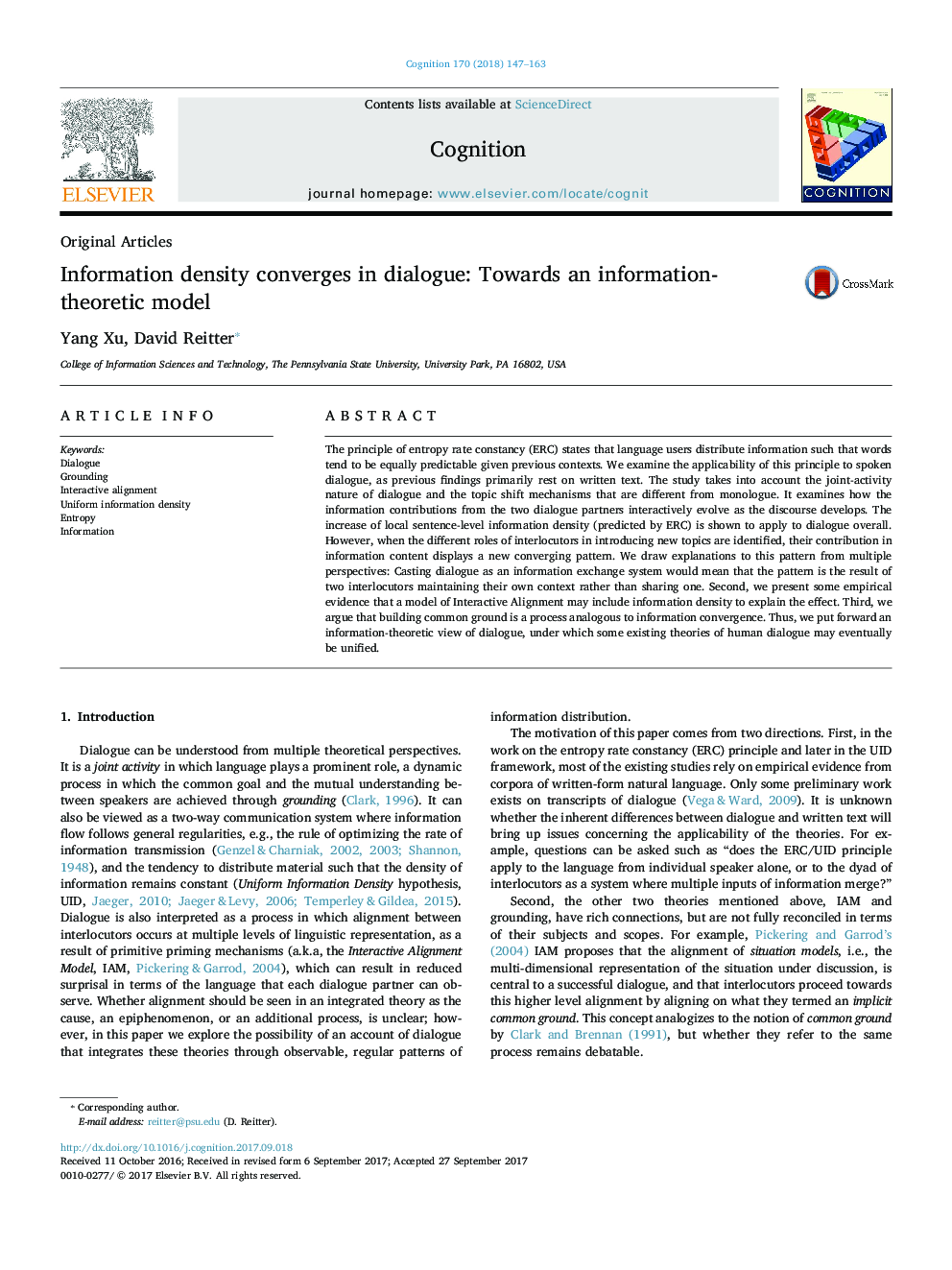| Article ID | Journal | Published Year | Pages | File Type |
|---|---|---|---|---|
| 5041407 | Cognition | 2018 | 17 Pages |
â¢Entropy rate constancy applies to dialogue: Interlocutors aim to spread new information evenly.â¢The information density of turns by leaders and followers converges within topic episodes.â¢The convergence of information density parallels lexical alignment within topic episodes.â¢ERC/UID applies to the dyad of interlocutors as a system. Alignment and grounding theories can be unified.
The principle of entropy rate constancy (ERC) states that language users distribute information such that words tend to be equally predictable given previous contexts. We examine the applicability of this principle to spoken dialogue, as previous findings primarily rest on written text. The study takes into account the joint-activity nature of dialogue and the topic shift mechanisms that are different from monologue. It examines how the information contributions from the two dialogue partners interactively evolve as the discourse develops. The increase of local sentence-level information density (predicted by ERC) is shown to apply to dialogue overall. However, when the different roles of interlocutors in introducing new topics are identified, their contribution in information content displays a new converging pattern. We draw explanations to this pattern from multiple perspectives: Casting dialogue as an information exchange system would mean that the pattern is the result of two interlocutors maintaining their own context rather than sharing one. Second, we present some empirical evidence that a model of Interactive Alignment may include information density to explain the effect. Third, we argue that building common ground is a process analogous to information convergence. Thus, we put forward an information-theoretic view of dialogue, under which some existing theories of human dialogue may eventually be unified.
